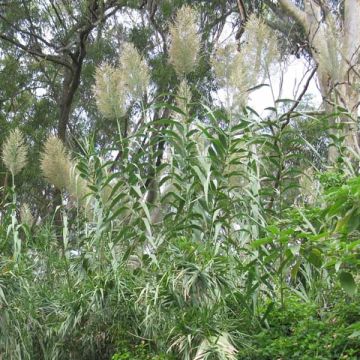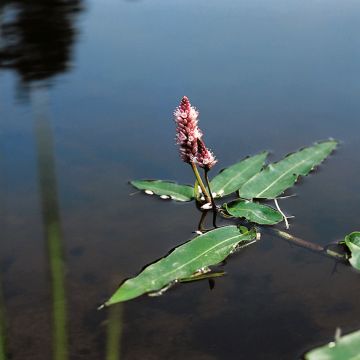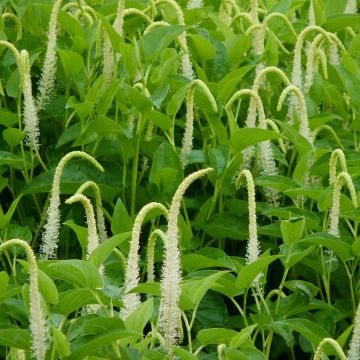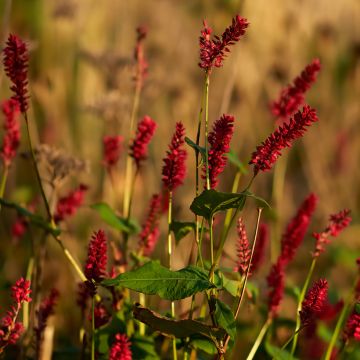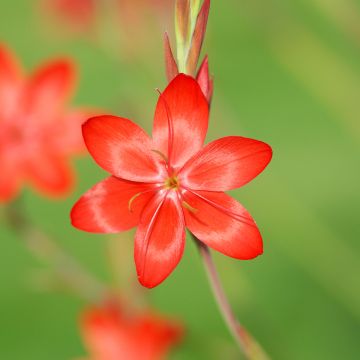

Saccharum officinarum violaceum - Canne à sucre pourpre
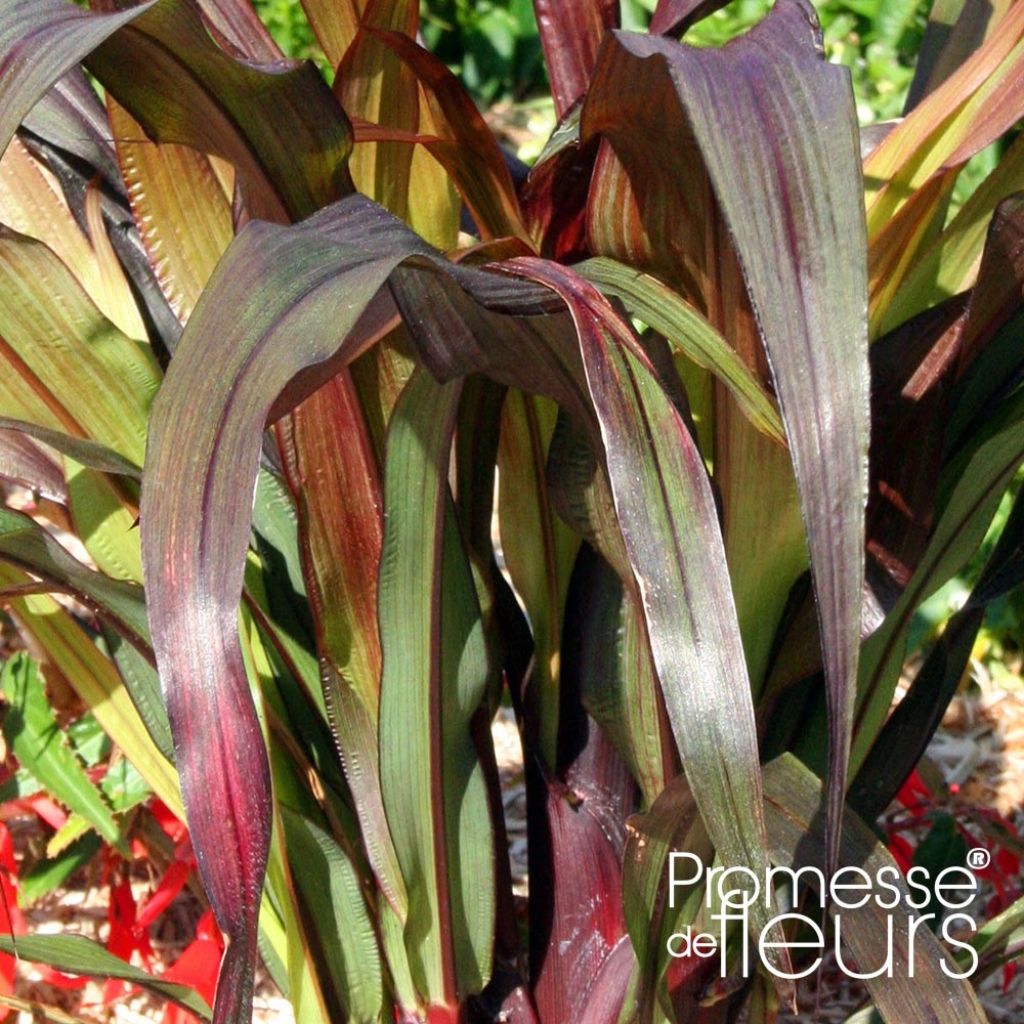

Saccharum officinarum violaceum - Canne à sucre pourpre


Saccharum officinarum violaceum - Canne à sucre pourpre
Saccharum officinarum 'Violacea'
Saccharum officinarum violaceum
Canne noble
Received very small and in one summer they grew rapidly, taking on a lovely purple hue, potted plant to bring indoors for winter and prevent them from becoming invasive.
Mike, 13/10/2024
This item cannot be shipped to the selected country
Delivery charge from €5.90
More information
Schedule delivery date,
and select date in basket
This plant carries a 12 months recovery warranty
More information
We guarantee the quality of our plants for a full growing cycle, and will replace at our expense any plant that fails to recover under normal climatic and planting conditions.
From €5.90 for pickup delivery and €6.90 for home delivery
Express home delivery from €8.90.
Does this plant fit my garden?
Set up your Plantfit profile →
Description
Saccharum officinarum 'Violacea', commonly known as purple sugarcane, is an ornamental variety with large leaves that start off very dark purple in their youth and then turn dark green, tinged with red and purple! Purple sugarcane forms a giant clump of thick upright stems carrying ribbon-like leaves, about 1m (3ft) long, that gracefully arch with age, giving a spreading appearance to this grass. Less frost-tolerant than the species, it is an interesting grass to acclimatize in urban gardens or under mild climates, taking care to cover the base with a thick mulch and allowing the foliage to wither to provide additional protection against the cold. Very vigorous and fast-growing, it can also be grown as an annual or kept in a large pot for overwintering. A moist and rich soil in full sun is essential.
Purple sugarcane is a variety of the classic sugarcane, grown for sugar and cane juice. It is a perennial grass belonging to the large family of Poaceae. It is a grass widely distributed in tropical and subtropical regions where it can reach a height of 5m (16ft), but it is probably native to the archipelago of Melanesia. It is a grass that likes light, heat, humidity, and rich, well-drained soil that remains fresh. Indeed, it develops between 10°C (50°F) and 30°C (86°F). The 'Purpureum' cultivar is a beautiful horticultural selection of this species, sought after for the beauty of its dark foliage with red and purple shades.
Saccharum officinarum 'Violacea', rooted on powerful trailing rhizomes, quickly forms a dense, erect clump composed of woody and robust canes, which can reach 2 to 5cm (1 to 2in) in diameter, smooth and dark reddish-brown, very aesthetic. These canes can rise up to 2.5m (8ft) above the ground, and the clump spreads to 2m (7ft) in width. Each cane has long internodes, separated by nodes from which all the leaves emerge. The very long leaves are alternate, opposite, linear, pointed at their tips, sheathing at the base, and they spread out and curve with age. The leaves start off very dark purple and then turn dark green, with wide tinges of purple and red. The leaves measure up to 1m (3ft) in length and 2 to 10cm (1 to 4in) in width, with sharp edges in one direction. They are deciduous. Purple sugarcane is not known for its late summer flowering, with silky terminal panicles 50 to 100cm (20 to 39in) long, bearing tiny white flowers. It does not flower regularly as it requires specific climatic conditions to flower, which are rare in our regions. The plant is frost-sensitive but more resistant than the species. It can be acclimatized in regions where temperatures never fall below -5°C (23°F).
Purple sugarcane is prized for its purple foliage and fast growth, which allows it to be grown as an annual in less favourable climates. Its dark foliage offers beautiful contrasts with brighter or lighter colors, such as the chartreuse blooms of some ornamental tobacco plants or the golden foliage of ornamental sweet potatoes. In the background of a flowerbed, along the edge of a pond, near a swimming pool, it provides volume and height, while remaining light, or it forms a temporary windbreak. In the Mediterranean, combine it with Daturas, Yuccas, and the vibrant blooms of Oleanders. Associating it with other plants can sometimes be a challenge, as it does tend to spread and has a strong personality. However, it can accompany hardy banana trees, large yellow-flowering daylilies, or Colocasias in an exotic setting.
Report an error about the product description
Saccharum officinarum 'Violacea' in pictures




Flowering
Foliage
Plant habit
Botanical data
Saccharum
officinarum
violaceum
Poaceae
Canne noble
Cultivar or hybrid
Other Arundo
Planting and care
The purple sugarcane is a frost-sensitive grass of tropical origin that thrives in hot and humid climates. Plant it in well-drained, cool, rich, neutral to acidic soil exposed to full sun. In climates other than very mild ones, grow it as an annual or in a pot with a rich and light substrate, which will need to be overwintered in a greenhouse or conservatory, protected from frost. Otherwise, consider installing it in a sheltered position against a wall, where it will benefit from the heat emitted by the mineral. Water is essential for its growth, so water regularly throughout the growing season and very frequently for potted specimens. Mulch to maintain moisture at its base. If temperatures never drop below -5°C (23°F), apply a minimum of 10cm (4in) of mulch on its stump and let the foliage dry in place.
Planting period
Intended location
Care
-
, onOrder confirmed
Reply from on Promesse de fleurs
Aquatic plants
Haven't found what you were looking for?
Hardiness is the lowest winter temperature a plant can endure without suffering serious damage or even dying. However, hardiness is affected by location (a sheltered area, such as a patio), protection (winter cover) and soil type (hardiness is improved by well-drained soil).

Photo Sharing Terms & Conditions
In order to encourage gardeners to interact and share their experiences, Promesse de fleurs offers various media enabling content to be uploaded onto its Site - in particular via the ‘Photo sharing’ module.
The User agrees to refrain from:
- Posting any content that is illegal, prejudicial, insulting, racist, inciteful to hatred, revisionist, contrary to public decency, that infringes on privacy or on the privacy rights of third parties, in particular the publicity rights of persons and goods, intellectual property rights, or the right to privacy.
- Submitting content on behalf of a third party;
- Impersonate the identity of a third party and/or publish any personal information about a third party;
In general, the User undertakes to refrain from any unethical behaviour.
All Content (in particular text, comments, files, images, photos, videos, creative works, etc.), which may be subject to property or intellectual property rights, image or other private rights, shall remain the property of the User, subject to the limited rights granted by the terms of the licence granted by Promesse de fleurs as stated below. Users are at liberty to publish or not to publish such Content on the Site, notably via the ‘Photo Sharing’ facility, and accept that this Content shall be made public and freely accessible, notably on the Internet.
Users further acknowledge, undertake to have ,and guarantee that they hold all necessary rights and permissions to publish such material on the Site, in particular with regard to the legislation in force pertaining to any privacy, property, intellectual property, image, or contractual rights, or rights of any other nature. By publishing such Content on the Site, Users acknowledge accepting full liability as publishers of the Content within the meaning of the law, and grant Promesse de fleurs, free of charge, an inclusive, worldwide licence for the said Content for the entire duration of its publication, including all reproduction, representation, up/downloading, displaying, performing, transmission, and storage rights.
Users also grant permission for their name to be linked to the Content and accept that this link may not always be made available.
By engaging in posting material, Users consent to their Content becoming automatically accessible on the Internet, in particular on other sites and/or blogs and/or web pages of the Promesse de fleurs site, including in particular social pages and the Promesse de fleurs catalogue.
Users may secure the removal of entrusted content free of charge by issuing a simple request via our contact form.
The flowering period indicated on our website applies to countries and regions located in USDA zone 8 (France, the United Kingdom, Ireland, the Netherlands, etc.)
It will vary according to where you live:
- In zones 9 to 10 (Italy, Spain, Greece, etc.), flowering will occur about 2 to 4 weeks earlier.
- In zones 6 to 7 (Germany, Poland, Slovenia, and lower mountainous regions), flowering will be delayed by 2 to 3 weeks.
- In zone 5 (Central Europe, Scandinavia), blooming will be delayed by 3 to 5 weeks.
In temperate climates, pruning of spring-flowering shrubs (forsythia, spireas, etc.) should be done just after flowering.
Pruning of summer-flowering shrubs (Indian Lilac, Perovskia, etc.) can be done in winter or spring.
In cold regions as well as with frost-sensitive plants, avoid pruning too early when severe frosts may still occur.
The planting period indicated on our website applies to countries and regions located in USDA zone 8 (France, United Kingdom, Ireland, Netherlands).
It will vary according to where you live:
- In Mediterranean zones (Marseille, Madrid, Milan, etc.), autumn and winter are the best planting periods.
- In continental zones (Strasbourg, Munich, Vienna, etc.), delay planting by 2 to 3 weeks in spring and bring it forward by 2 to 4 weeks in autumn.
- In mountainous regions (the Alps, Pyrenees, Carpathians, etc.), it is best to plant in late spring (May-June) or late summer (August-September).
The harvesting period indicated on our website applies to countries and regions in USDA zone 8 (France, England, Ireland, the Netherlands).
In colder areas (Scandinavia, Poland, Austria...) fruit and vegetable harvests are likely to be delayed by 3-4 weeks.
In warmer areas (Italy, Spain, Greece, etc.), harvesting will probably take place earlier, depending on weather conditions.
The sowing periods indicated on our website apply to countries and regions within USDA Zone 8 (France, UK, Ireland, Netherlands).
In colder areas (Scandinavia, Poland, Austria...), delay any outdoor sowing by 3-4 weeks, or sow under glass.
In warmer climes (Italy, Spain, Greece, etc.), bring outdoor sowing forward by a few weeks.



































